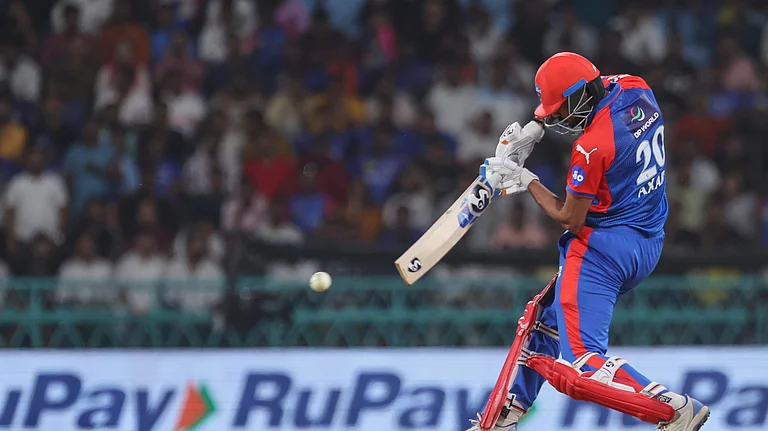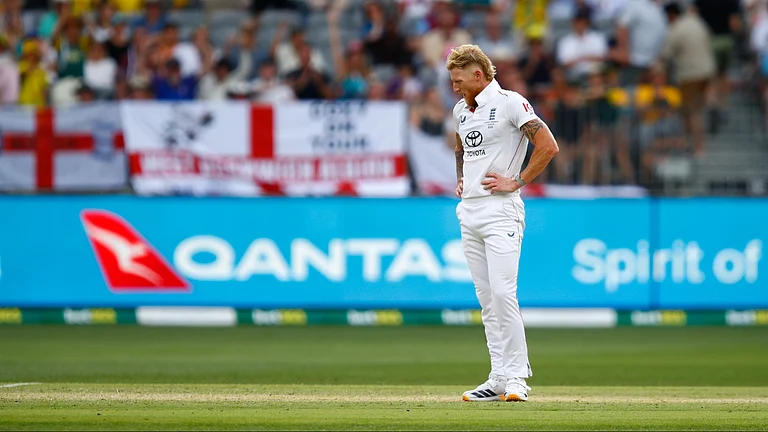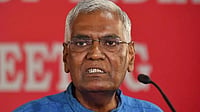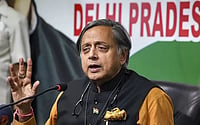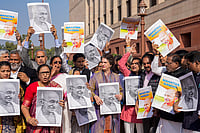HERE are two uncommonly gifted but vastly different artists: one a blind octogenarian zari craftsman whose magic fingers once wove delightfully multi-hued and lifelike motifs in the musty confines of his Agra workshop, the other a talented, internationally acclaimed young filmmaker whose all-seeing camera still yields visually stunning images on the large screen. When the latter turns his insightful gaze on the former, the result can only be as utterly bewitching as Shams' Vision , Shaji N. Karun's touching, strikingly evocative 27-minute tribute to the genius of Sheikh Shams Uddin, the pioneer of three-dimensional embroidery who tragically lost his eyesight in 1985 during the US exposition of Moses, perhaps his most demanding work. was aware of Shaji's successes as a director. But I was drawn more by his phenomenal work as a cinematographer," says Manu Grover, producer of Shams' Vision . A Delhi businessman, Grover had met the director late last year through a common friend. A brief visit to Agra convinced Shaji, in turn, of the viability of the project as a brief engagement between two big features. Shams' Vision was shot in 10 days in May this year.
Few men in India can lay claim to the brilliance that comes naturally to the Thiruva-nanthapuram filmmaker who lit the classic cinematic essays of the late G. Aravindan in colours that spoke an eloquent language of their own and accentuated the late director's globally applauded poetic vision.
Shaji brings his trademark visual style—Hari Nair, who handled the camera for the director's 1994 feature, Swaham (My Own), repeats the role here—to bear upon the simple tale of a small-town artist whose creations have made waves all over the world. But it's not just camerawork and lighting that make Shams' Vision the mag-nificent viewing experience that it is. The manner in which Shaji structures the docu-narrative—the eventful and tragic drama of Shams Uddin's life—is proof of his grasp on the medium in its entirety. A trait that Shaji amply demonstrated in 1988 with his very first feature, Piravi (The Birth), a powerful, real-life tale of an old man who clings on to the dwindling hope that his missing son will return one day.
Beginning on a deceptively low-key note, Shams' Vision warms up gradually as Shaji guides the rapt viewer through the high points of an artistic landscape that is dotted with dizzying peaks of sheer inspiration. The kind of inspiration that engenders a harmonious coalescence of intricate thread-work, a lush palette of colo-urs, and, above all, a dramatic sense of animation.
What Shams achieves with his needle, wielding it like a painter's brush, Shaji does with his camera, wielding it like a soft searchlight. The constant play of light and shadow is no idle embellishment: it sums up in cinematic terms the contrasts that Shams deals with—divinity and death, mortality and immortality, brightness and darkness. "The humane touch that Shaji imparts to the film is what I really like," says Grover. Shams' Vision is essentially about the tragedy of an artist who is driven by a celestial power he can barely comprehend to pursue his visions of life forms in paradise and, in doing so, loses his eyesight.
Shaji's next film, too, will deal with an artist: a Katha-kali dancer. "It's about the the agony of a Kathakali dancer who struggles to come to terms with the gap between ambition and achievement," says the director. It will be an Indo-French co-production shot entirely in Kerala, and in Malayalam. Kerala superstar Mohanlal will play the lead role. "It's a Rs 4-crore period film. The post-production will be done in Paris," reveals Shaji.
This will be French distributor Pierre Assouline's third foreign-language production in a row. He has just done a Czech film and is currently working on a Finnish production. "My film," says Shaji, "will roll by November-end and be ready by May 1997."
Being a Shaji film, it will, as always, be eagerly awaited. Until then, Shams' Vision, which is in the running for a slot in the Indian Panorama, will keep the arthouse circuit busy. With good reason.







